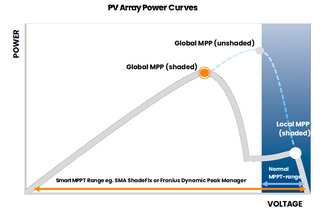

The design and installation of a wind and solar electrical system must take into account the potential hazards and methods taken to minimise the risks both during and after the installation.
There are several power sources in such systems: mains electricity; generators; PV modules and batteries - all have the potential to cause serious injury if safety standards and precautions are not observed.
The system and components must be designed and specified correctly with consideration of operation under both normal and fault conditions.
Good installation and subsequent maintenance is then important to ensure the long-term safety, reliability and performance of the system. This should include appropriate periodic system inspection and testing.




Safety During Installation
During the planning and design stage it is important to ensure that the installation is safe for the installers. In some circumstances the application of the CDM regulations will be required.
The installation of Wind & PV systems can present a unique combination of hazards – due to risk of electric shock, working at height, erecting towers, dealing with batteries and simultaneous manual handling difficulty.
Many of these hazards are encountered as a matter of course on a building site, but rarely all at once. For example:
While roofers may be accustomed to minimising risks of falling or injury due to manual handling problems, they may not be used to dealing with the risk of electric shock.
Similarly, electricians would be familiar with electric shock hazards but not with handling large objects at heights.
Not many electricians are familiar with the issues involved with large battery banks.
Due to the potential hazards involved, many systems should only be installed and serviced by qualified personnel.



Before attempting to install, operate or maintain any equipment, you should read and thoroughly understand all relevant instructions and ensure that all stipulated safety checks are carried out.
- Many installations should only be attempted by suitably experienced personnel.
- Never work on any live electrical circuits or components.
- All wiring should be carried out to follow equipment instructions and local electrical standards.
Always be aware of possible shocks and short circuits from modules, batteries and generators and take steps to avoid them:
Avoid the possibility of any accidental shorting across live terminals by metallic objects.
- Use insulated tools.
- Always remove rings and jewellery.
- Physically separate high voltage DC positive and negative conductors to avoid potential shocks.
Short circuits or poor connections in wiring can cause sparks, so ensure particular care is taken when working near batteries, fuel storage areas, or engine rooms. These should be adequately ventilated to prevent build up of explosive fumes and beware of smoking or use of naked flames in the vicinity.
- Ensure children are protected and kept away from the hazardous components of systems: - eg. wind turbine towers; batteries; engine generators; electrical equipment and wiring.
- Install suitable warning signs near these components, control cabinets, switchgear or other hazardous areas.
See: Labels
Inverters and generators produce mains voltages and due care must be taken.
- All systems must be adequately earthed.
- Inverters should be switched off and DC supply (battery or PV array) isolated before working on them or their wiring.
- In systems with two AC sources (generator or grid and inverter) warning signs must be located near switchgear or consumer units and both supplies switched off before doing any work on circuits or equipment.
- Auto-start generators can start without warning, - disconnect their starter battery before working on them or the system. Beware of moving parts.









